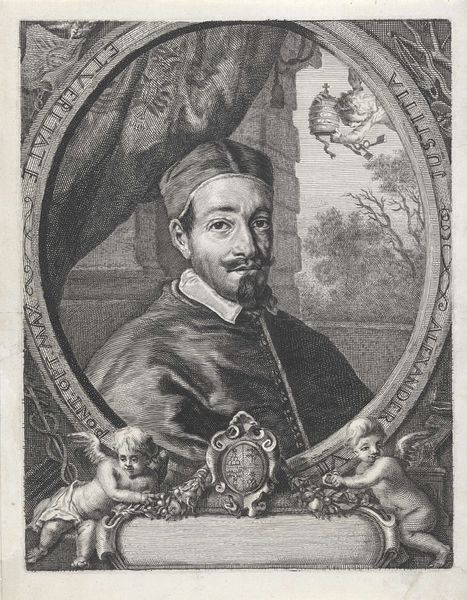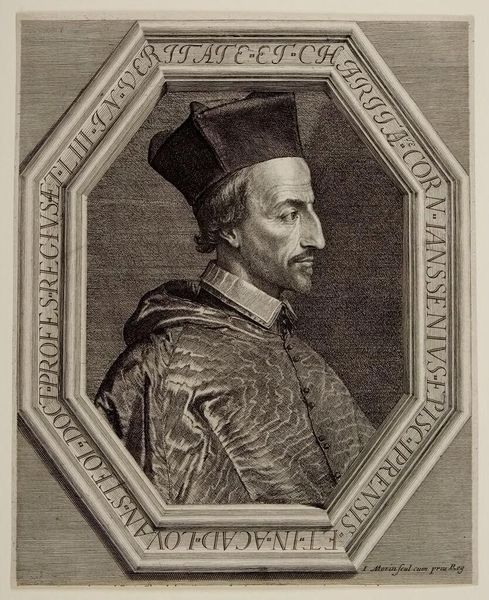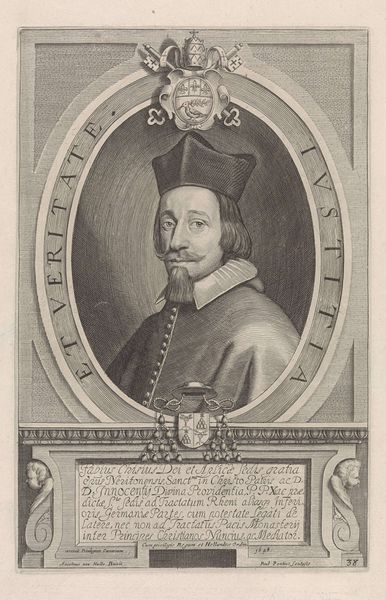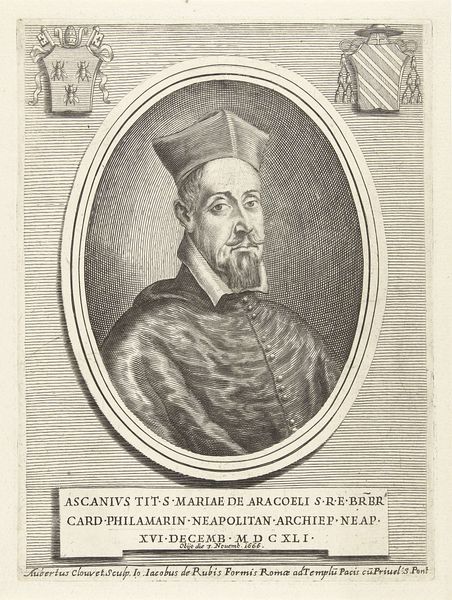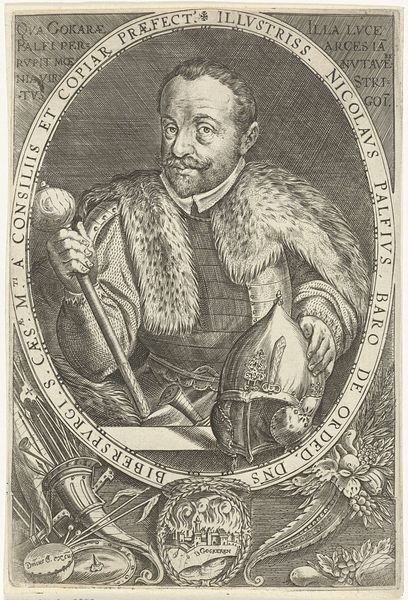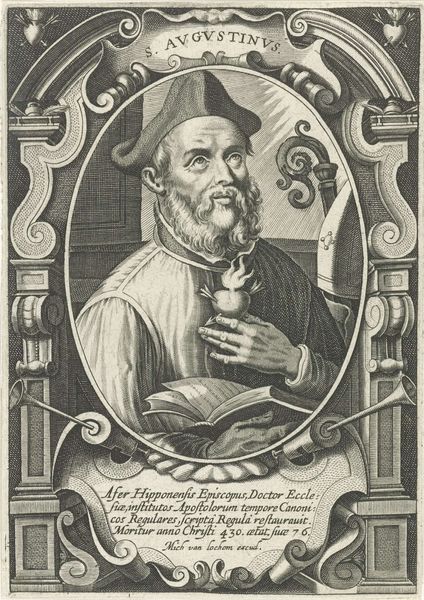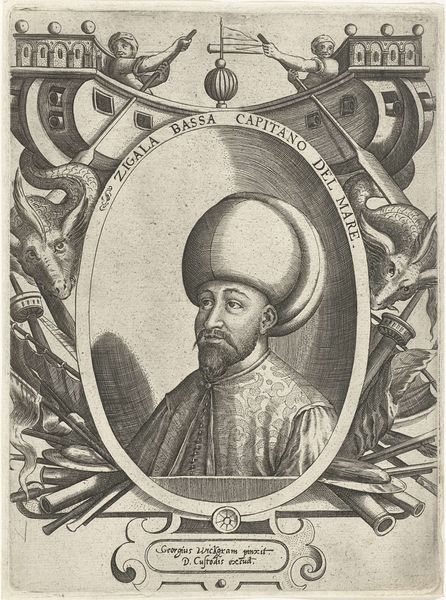
Portret van Armand-Jean du Plessis, hertog van Richelieu 1628 - 1670
0:00
0:00
print, paper, engraving
#
portrait
#
baroque
# print
#
old engraving style
#
paper
#
portrait reference
#
history-painting
#
engraving
Dimensions: height 165 mm, width 118 mm
Copyright: Rijks Museum: Open Domain
Editor: This is a print of Armand-Jean du Plessis, the Duke of Richelieu, dating from sometime between 1628 and 1670. It’s attributed to Pieter de Jode II, and I believe it's currently at the Rijksmuseum. I'm struck by the formality; even in a printed image, you sense his power. What symbolic layers might we unpack in this portrait? Curator: Indeed. Consider how the trappings of religious and secular power intertwine. The Cardinal's attire, especially his hat, clearly mark him as a high-ranking member of the clergy. What emotions or associations does that evoke for you, seeing such potent imagery from that era? Editor: It makes me think about how deeply interwoven religion and politics were, but I can’t tell what’s meant to express dominance and what’s for spiritual identity. Curator: Precisely. Note how Richelieu is positioned against an architectural background. These aren't mere decorations; they are visual cues designed to project permanence and authority. Also, observe the Maltese cross, its significance transcends pure faith, representing military prowess, which carries historical meaning. This symbol suggests his authority reaches beyond the ecclesiastical. What kind of statement is being crafted? Editor: So, not just a man of the church, but a powerful, almost worldly leader. It's a fascinating intersection, especially considering the turbulent politics of the time. Curator: Exactly! Images like this aren't just documentation; they are crafted arguments. The artist carefully selects visual elements to portray the subject in a certain light. Think about who commissioned the work, and the message they wanted to send. Editor: Thinking about Richelieu’s complex role in politics, that interplay of symbols really enriches my understanding of the piece, not just as a portrait but as a statement of power. Curator: I concur. Understanding these visual languages unlocks the historical narratives embedded within art.
Comments
No comments
Be the first to comment and join the conversation on the ultimate creative platform.

